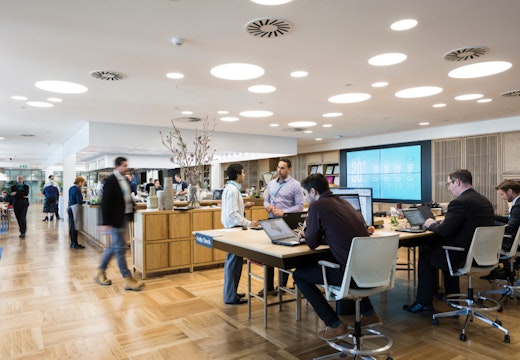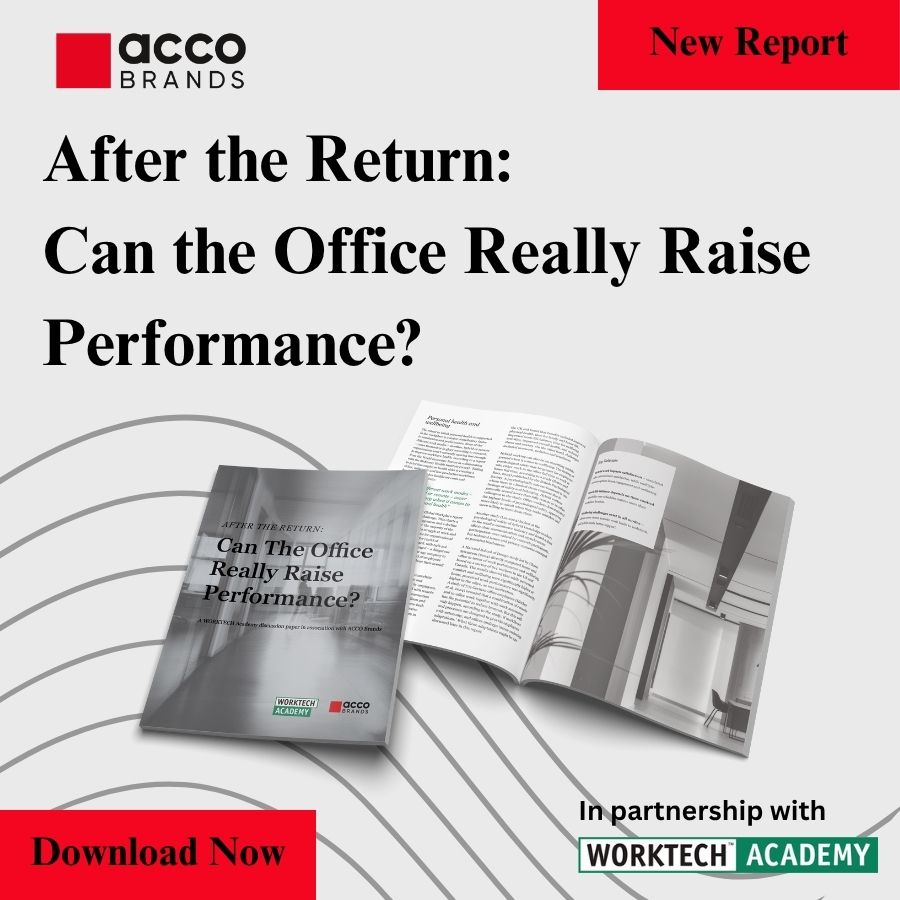Open arms: the new age of workplace transparency
As the digital world progresses at pace, Lendlease’s Alison Webb looks at the business case for and against opening our offices to the world and collaborating outside the four walls of an office
Our workplaces have been on an evolutionary journey that has taken us from cubicle and closed-door offices to the transparent physicality of open plan – all designed to increase the connections within our business.
However, the World Economic Forum tells us that we stand on the brink of the fourth industrial revolution – a digital transformation characterised by ‘the [unlimited] possibilities of billions of people connected by mobile devices, with unprecedented processing power, storage capacity, and access to knowledge’.
In this new age, connections inside your business are not enough. The challenges our customers, communities and businesses face will require people from different sectors collaborating on the same problem.
So, when we think about workplace transparency today, the really progressive employers are looking beyond their four walls to form transparent connections with their surrounding environments too. This new age of workplace transparency is just emerging, and creates some exciting challenges and opportunities for us in how we think about our ‘offices’.
Transparency on the inside: connecting your teams
Internal workplace transparency is built on the theory that being out and open will increase connections, slay hierarchies and improve productivity. And we can see some of these benefits in action – Thomas Allen’s famous 1970s study proved the link between physical proximity and face to face communication, and in 2014 Ben Waber found that this holds for digital communications too – the closer you are physically to a colleague, the more likely you are to both speak and email each other.
However, we are also seeing some signs of businesses moving away from open plan and activity-based working environments, generally for two reasons: the need for individual deep thinking and focus; and the need for team privacy or to forge stronger team connections.
To see the first reason in action, you only need to walk into an office and see most of the employees listening to their headphones in a bid to focus on their work.
We can see a few pioneering businesses respond to the need for both team privacy and team connections. Spotify for example actively brings back the walls for its engineering teams, creating enclosed spaces for its ‘squads’, which have workspace and huddle space combined.
We have taken a similar approach for our Lendlease headquarters in Australia, providing semi-enclosed neighbourhoods for teams of 12-15 people, with fingertip access to the full range of support spaces you need (focus, collaboration and storage). These models provide teams with more autonomy and control, and they can also contribute towards an improved sense of psychological safety – which Google has found is the most important predictor of team performance among its employees.
So for our internal working environments, the key appears to be ‘smarter transparency’: striking a balance on the inside by offering a variety of different types of workspaces, such as open plan, private, semi-private, collaborative and solo space, as well as both formal and informal environments. It’s important to remember transparency and privacy are equally as important for performance.
Transparency on the outside: forging new connections
The same tension between transparency and privacy exists when we look at how businesses are opening up and making their workplaces more interactive with the outside world. We often see two contradictory models, which I’ll call the fortress and the permeable workplace.
Examples of the fortress model are often found in the technology sector. Apple’s new ‘Apple Park’ headquarters in California is literally a circular, inward-looking fortress for employees. Amazon’s Seattle campus provides all the amenities staff could ever need – creativity rooms, dog parks – so they never need to leave.
These fortresses and mega-campuses are designed to create a strong internal community, drive connections within the business, and are built to protect knowledge, ensuring all the good ideas happen inside the physical walls of the company (and some may also say they’re a tool to keep people working longer!).
Then you’ve got the permeable workplace, where the line between the organisation and the outside world is faintly-drawn. This is the sort of transparency that could potentially help us face the challenges of this fourth industrial revolution.
‘Businesses are opening labs and incubators to invite more outside collaboration’
National Australia Bank (NAB) has created ‘The Village’ in their Melbourne headquarters, which has involved opening up the entire ground floor to their retail and business banking customers to use for work. This has allowed NAB staff to get closer to their customers, and so opened new opportunities for their teams in solving customer problems.
We’re also seeing businesses open up labs and incubators within or adjacent to their offices: some are even setting up industry-wide incubator presences.
Facebook will house technology start-ups in its new London office incubator space, called ‘LDN LAB’, and Barclays has set up Rise, a shared workspace for fintech start-ups. This is often a way for established businesses to drive diversity and acquire something new, be it talent, businesses or ideas.
The permeable workplace also sees companies pushing work out into third spaces and encouraging staff to interact with the world around them. Bloomberg’s new offices in London intentionally didn’t provide all the new-age amenities we now see in tech campuses in-house because they wanted their staff to be active members of the surrounding community – contributing to their neighbourhood, but also opening up their networks and ‘bump’ opportunities outside.
This emerging trend of more permeable workplaces is what we are designing at International Quarter London (IQL): a menu of third spaces you can work from, including outdoor offices; active lobbies where you can meet or work; and a mix of on-demand spaces, such as for workshops and events. These areas are supported by a dynamic mix of retail and lifestyle offerings that support the whole work life of employees.
Ultimately, it’s hard to know how transparent is too transparent in the working environment. It varies from business to business, and from sector to sector. But what we do know is, transparency matters, particularly in a world where we face ever more complex challenges that require us to collaborate with partners outside our business and four walls.








